Are you helping Google surface your products to your potential customers?
The search engine has developed a wide range of new opportunities for e-commerce brands to attract customers, provide critical shopping information, and visually represent products across an enhanced search results page.
E-commerce experienced exponential growth during the pandemic. In the following chart, you can see how the lockdowns during the pandemic have affected global e-commerce sales, giving them a boost. In addition, all e-commerce sectors are forecast to see steady and continuous revenue growth through 2024.
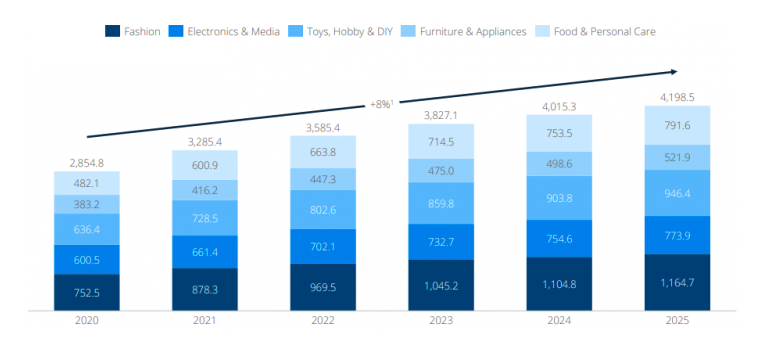
GRAPH: Global eCommerce Revenue Forecast 8% Growth 2020-2025
When physical stores began to close for the health and safety of the public, online stores became essential to the business health of many commercial brands. Whether they were launching an e-commerce website or improving the performance of existing stores, smart businesses knew e-commerce was a lucrative financial investment.
In the world of e-commerce, Google has lost significant market share to Amazon. The e-commerce search engine has increasingly become the default option for customers researching and purchasing products, despite criticisms of Amazon favoring its own products and bullying retailers.
This has led Google to make a series of major e-commerce changes.
“We’re advancing our plans to make it free for merchants to sell on Google. Beginning next week, search results on the Google Shopping tab will consist primarily of free listings, helping merchants better connect with consumers, regardless of whether they advertise on Google”. Bill Ready – President, Commerce
This new approach reduces the exclusivity of Google’s pay-to-play model. While selling products on Google used to be the preserve of advertisers, now small and medium-sized businesses can also sell products on Google organically. But how can you get free listings on Google for your products? In this article, I’ll tell you the key to success for your e-commerce SEO and how you can use it to get better search visibility across all of Google’s products and ultimately, increase your sales.
How To Get Free Listings On Google For Your Products
While it used to be the investment in advertising that made the difference, now with the new free listings, it’s the data that determines whether or not your products show up on Google.
Google has expanded the eligibility of websites that use structured data for both commercial listings and product snippets in Google search results.
Whereas before you could share information about the product group you wanted to advertise on Google, now with free listings it is essential to provide the search engine with all the information it needs to know what you are selling and help users to conclude the purchase. This helps Google present your products more accurately in organic search.
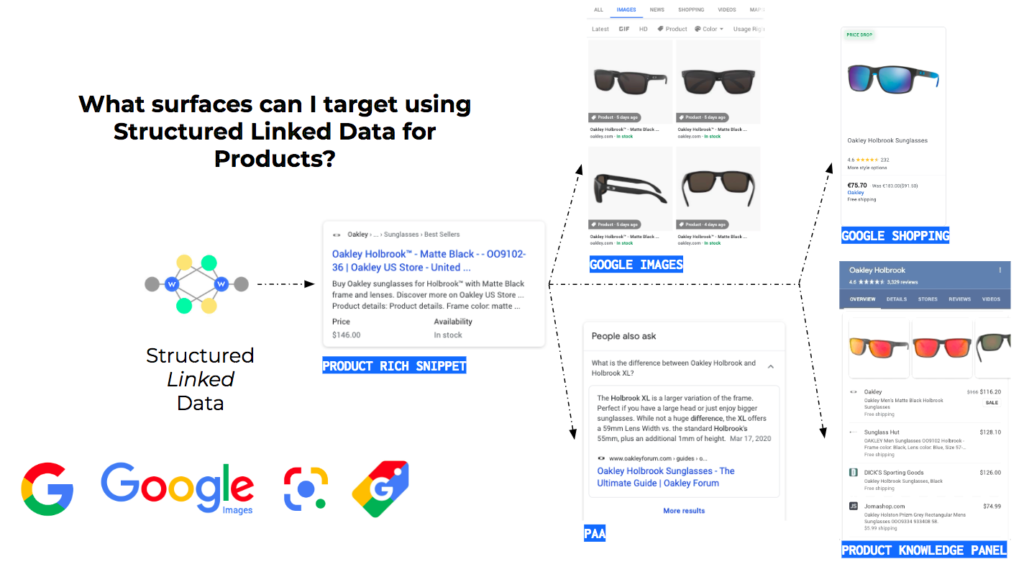
Using structured data is the key to getting your products to show up in Google’s free listings. This is because it provides the search engine with all the information it needs to understand your products and display them to users.
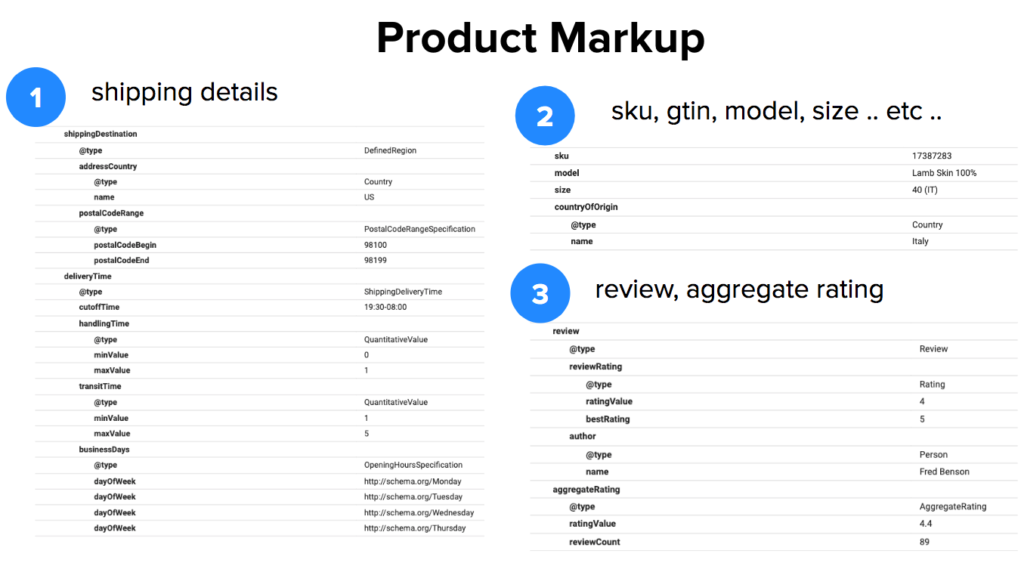
Therefore, it is important to have an accurate and complete data set. This is the only way to get free listings on Google, attract more visitors to your e-commerce and make more sales.
What Is A Product Knowledge Graph And Why It Is Important For Your E-Commerce SEO
The Product Knowledge Graph (PKG) is an e-commerce-specific form of knowledge graph designed to improve product discoverability and end-user experience by enriching a brand’s content with data.
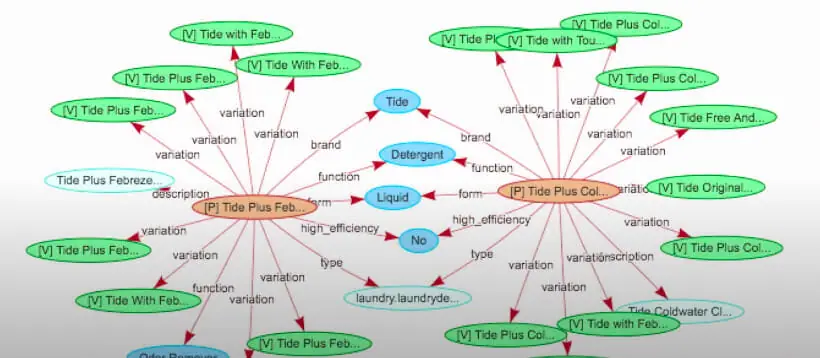
Visual example of the Product Knowledge Graph
It is used to link products and all the information about them, creating the dynamic architecture behind your website that helps the search engine understand and index the content and show it to those who are interested and searching for that particular product. It also allows you to link editorial content to product content, helping consumers in their customer journey and bridging the gap between them and the brand.
As we know, the customer journey is not linear (we have already talked about the messy middle several times) and there are numerous steps that the user goes through before completing a purchase. The PKG allows you to drive the user on their journey to find the product they are looking for and find it in your e-commerce store.
Let us take an example. Silvia is looking for a new pair of sunglasses to wear while hiking. Silvia’s customer journey starts with a question. She will search for information, ask questions, and read different content to find out which product best fits her needs.
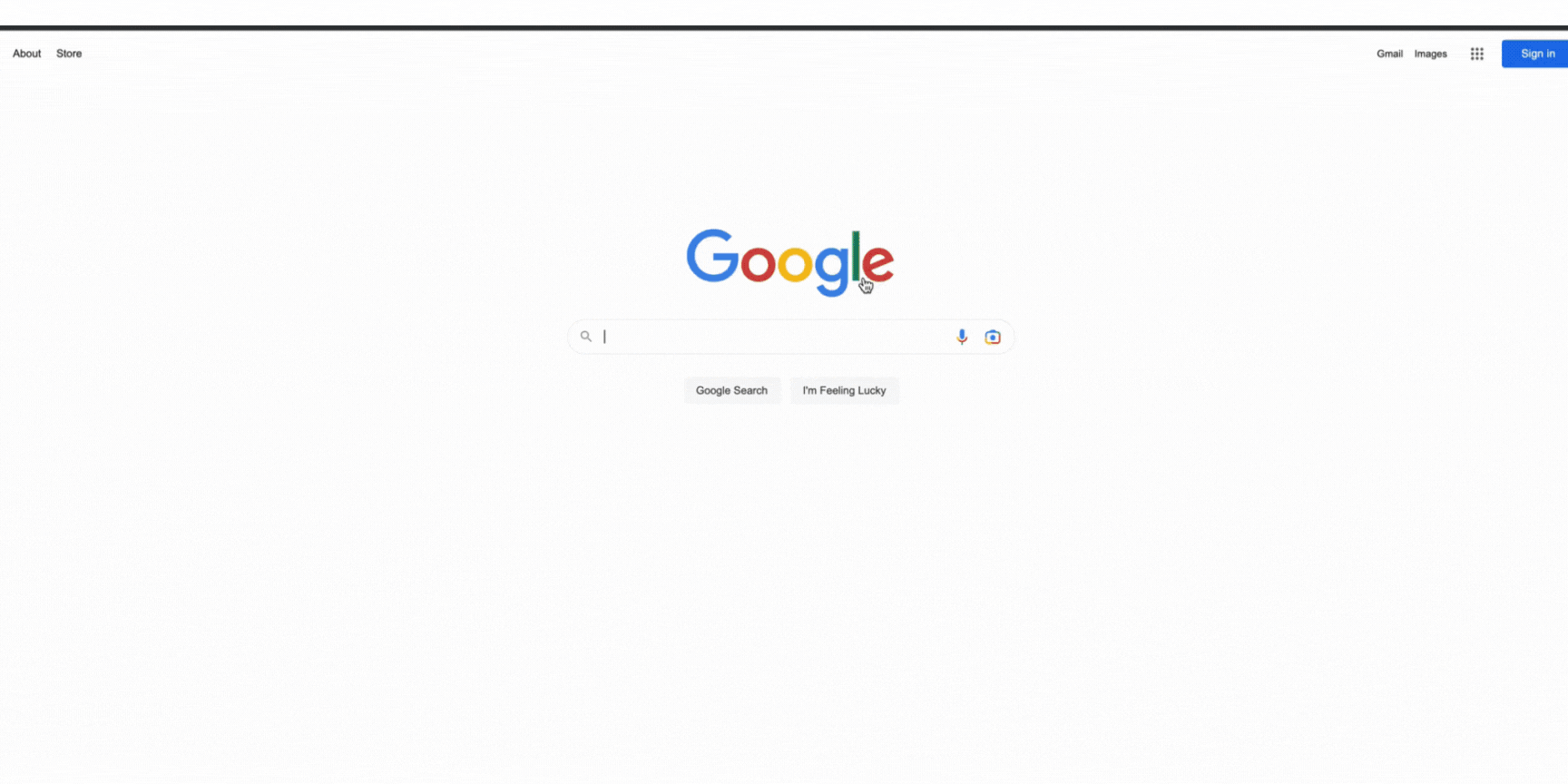
In an e-commerce context, it’s all about connecting your site’s editorial content with purely transactional information such as prices, availability, types, product numbers, payment methods, and delivery information. This is what the PKG does for your data and your customers.
It allows you to create a data set that is not only available to the customer (Silvia in our example) but can also be used by various types of automated applications that Silvia (and other potential and future customers) use to navigate your content (search engines, chatbots, personal assistants, etc.).
The Power Of Structured Data For E-Commerce
As you have seen above, the power of structured data is immense, and a Product Knowledge Graph is critical to making your products visible in Google free listings and improving SEO for your e-commerce.
Specifically, there are 3 benefits that you can achieve as you can see below.
Better visibility for your products
The Product Knowledge Graph makes your content visible because it provides machine-readable and highly interconnected descriptions. Just like Google’s Knowledge Graph does.
However, the Product Knowledge Graph fulfills a special need: discoverability. It is a specialized graph that provides answers that can ultimately be read by robots. The Product Knowledge Graph focuses on discoverability and enables improved e-commerce marketing by providing the data structure for targeted, richly linked, product-enriched content.
Creating immersive content for your audience
To increase audience engagement, it is important to create a dynamic and carefully linked environment. Product Knowledge Graph connects editorial content with product categories so that the user can easily navigate through the editorial content and, when ready, proceed to purchase the product they have chosen by instantly seeing prices, rates, availability, types, delivery information, etc.
Enabling interoperability of your data set
With a Product Knowledge Graph, data can be easily shared across different devices, platforms, and software. You can provide APIs to other parties, such as search engines and retailers, and run business-critical “hubs” that collect data and make it available to users, such as Merchant Center, Google Shopping, voice assistants, etc.
How You Can Build A Product Knowledge Graph For Your Online Shop
In this scenario, optimizing an e-commerce company’s products by curating and enriching its data means involving both the marketing and development teams in the workflow. This relationship, as we know, is not always easy.
With WordLift, it is possible to make this process smoother and more accessible to all, without the need for developers. Indeed, you can add structured data about the products in your e-commerce and build your Product Knowledge Graph, which allows you to list your products on Google Shopping for free.
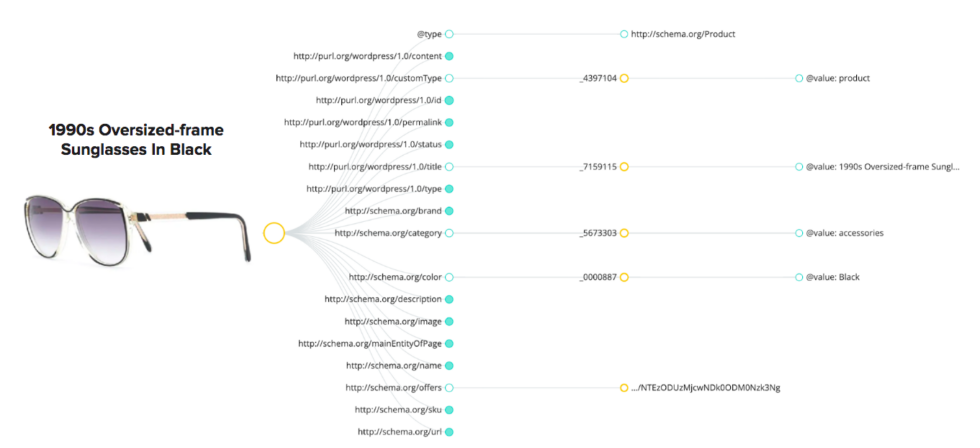
To build your Product Knowledge Graph, you can start with the data you have about the products in your e-commerce. You can use your product information management system, where you store all the product attributes, or you can use your merchant feed, which allows you to view your products on different interfaces. Otherwise, you can choose to crawl your website to extract additional attributes that will help you build the Knowledge Graph.
Here are three important challenges:
- Data scarcity. Identify product attributes and focus on those that are important to customers in their search. Product identifiers, color, material, product type, brand, etc
- Data completion. Ensure data (structured and unstructured) is complete and consistent. Adding multiple formats for each product image is a good example. Another example is checking if the free description in the table contains missing information.
- Data quality. Check the reliability of the data. In SEO, it is important to ensure that data presented as structured data matches data submitted via XML feeds (e.g. Google Merchant Feed). It also helps to prevent product descriptions from conflicting with structured data.
The result of WordLift is the curation and linking of data. In other words, the available information about your products is not only enriched with structured data to make it readable by Google and search engines but your data is also linked to other data sources such as Wikidata and DBPedia.
Entity-based SEO gives context to your website. That’s why it’s important to work with entities, because they help connect the world’s information to get relevant results when searching.
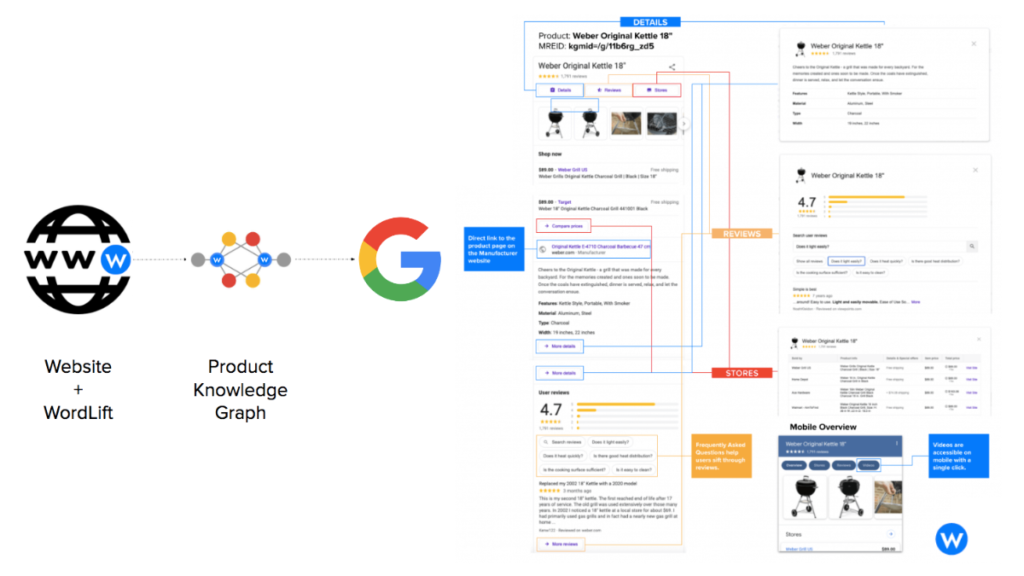
The solution developed by WordLift works with proprietary CMS as well as other e-commerce platforms such as Shopify and Magento. It all starts with the data sent to WordLift, which is implemented and enriched to build the Product Knowledge Graph.
Recently, WordLift has developed the Product Knowledge Graph Builder. If you have an e-commerce feed and a merchant feed, you can use this feature to import the data by enriching it with structured data and creating your Product Knowledge Graph in a few simple steps.
Data Harmonization And Data Reconciliation
Data synchronization and reconciliation are critical to your e-commerce SEO.
The first ensures that the information comes from the Merchant Feed and matches the information in the Merchant Feed. This helps you avoid confusing Google and not being found for one or more specific search queries.
The second is making sure there are no duplicates that could cause Google to refuse to show products in the free listings. A lack can be confusing and cause your products to not rank well on Google for one or more specific search queries. This is made possible by a unique product identifier (UPI) assigned to each individual product in your e-commerce.
AI-Generated Content For E-Commerce
As Google challenges Amazon to become the leader in e-commerce online search, we expect to see more features to improve the user experience, more opportunities for visibility, and easier access leading to more competition in the search results.
What other ways do we envision eCommerce brands scaling their visibility in search?
AI-generated content has become a popular trend in tech and it’s the perfect tool to leverage in e-commerce content and SEO. In fact, our founder Andrea Volpini wrote extensively on the power of AI to automatically create content for product descriptions and FAQs. Meanwhile, iPullRank’s founder Mike King addresses why AI content is not yet a threat to SEO.
Be careful, though, because creating content with AI does not mean you have to forgo human input. In fact, this is still crucial to ensure the validity of the action and its consistency with the brand and its characteristics.
In WordLift, an advanced validation workflow has been developed that allows editorial teams to scale SEO, saving time and energy within optimal results.
Similarly, data and AI can be used to generate FAQs and e-commerce 404 smart pages that provide users with an increasingly relevant experience that facilitates the buying process.
Most e-commerce brands are not leveraging structured data to improve the visibility of their products and even fewer are using a Product Knowledge Graph to develop topical authority in their space.
Take this competitive advantage and become the most likely product to appear in your buyer’s search results.
Want help creating a Product Knowledge Graph and a complete content journey for your e-commerce brand? Contact iPullRank for a consultation and WordLift for technical implementation.







